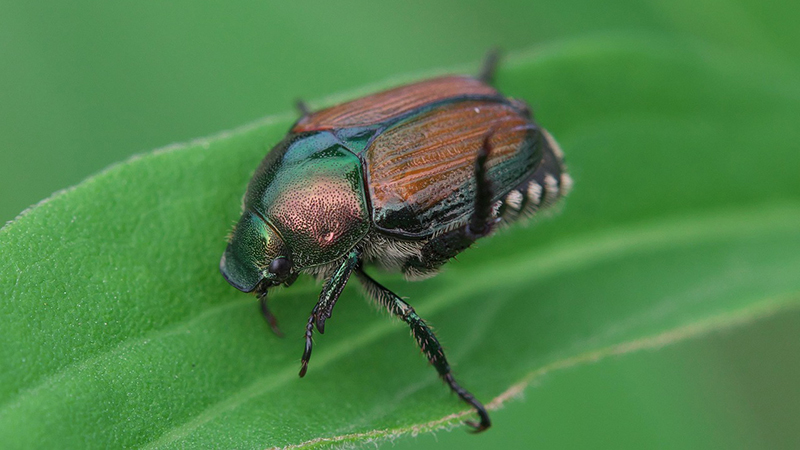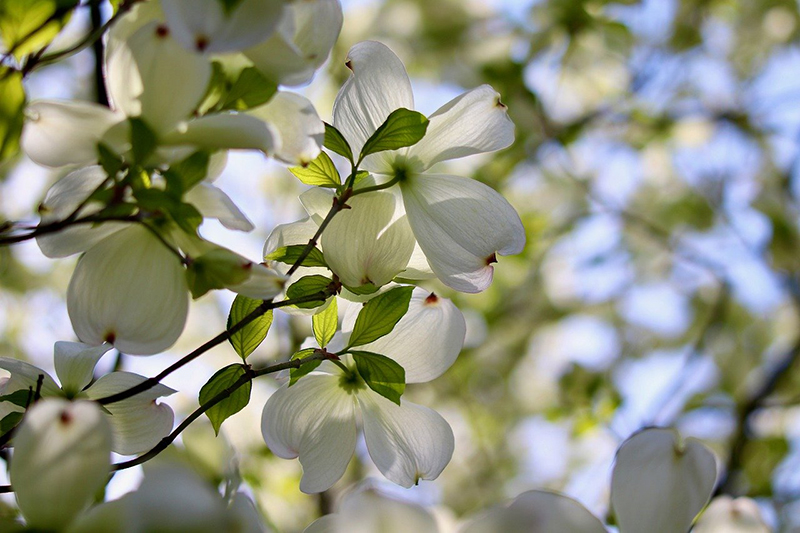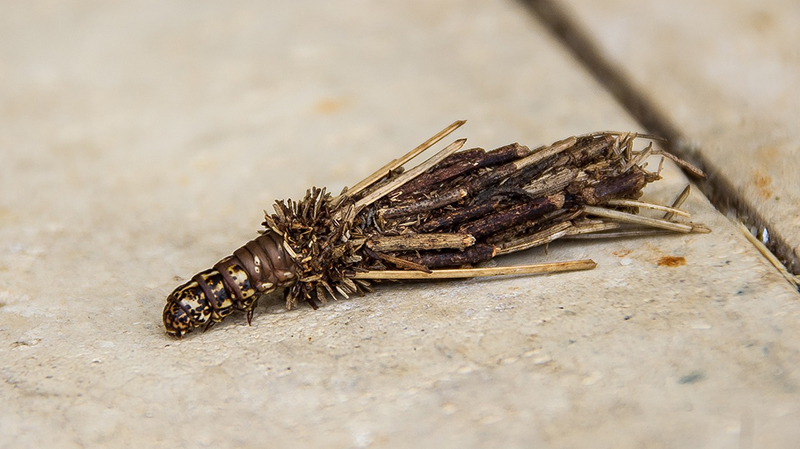Even small bugs can cause significant damage to large trees. Despite the flourishing urban tree population in the area, Milford is not immune to tree pests. They will munch their way into leaves, flowers, fruits, and even deep into the tree bark.

They will not stop until your tree is weak or dead, so when it comes to tree care, it’s smart to know your enemy.
Here’s a guide on the worst tree pests found in Milford, Michigan, and how you can protect your prized property from these invasive insects.
1. Emerald Ash Borer
If you have ash trees on your property, you have to be wary of this bug.
The Emerald Ash Borer (EAB) is notorious for killing millions of ash trees here in North America.
Finding D-shaped exit holes on the bark’s surface and serpentine tunnels or “galleries” underneath is a common sign of this insect’s presence.
These galleries disrupt the water and nutrient flow within your tree, resulting in canopy dieback that kills your tree in just a few years.
Early detection can save your tree from succumbing to the EAB’s threat.
It can be treated with insecticides, while severe cases require full tree removal for the safety of other trees.
2. Japanese Beetle
The Japanese beetle jeopardizes the health of your ornamental and fruit trees by feeding on flowers and leaves.
As this pest attacks your tree, it also releases a scent that invites more pests to the feast.
The problem worsens even further when they lay eggs, which develop into destructive grubs on the surface of your lawn.
These grubs will chew on turfgrass and plant roots, resulting in loose, spongy, and brown patches in your yard.
A Japanese beetle tree infestation is distinguishable by skeleton-like leaves, where only thin veins remain, giving your tree a scorched appearance.
Meanwhile, flowers become ragged after being attacked by these beetles.
While they seldom kill trees, this pest should still be taken seriously, as it weakens your tree’s defenses against diseases.
Aside from strategic insecticide application, you can use traps and plant-resistant species to keep the Japanese beetles off your prized property.
3. Dogwood Borer
A native species in North America, this moth can ruin a wide range of tree species, including flowering dogwood, oak, mountain ash, birch, hickory, and apple trees.
The Dogwood Borer enters through thin or wounded bark and causes damage to the vascular system of your tree.
The larvae create galleries within the bark that block the delivery of nutrients across your tree.
Signs of a Dogwood Borer infestation include loose or sloughing tree bark, dying branches, and frass or insect excrement.
Significant damage will kill young trees and leave old trees weak with dead branches.
Insecticides and pruning can control the spread of the infestation.
Ensure pruning is done during the Dogwood Borer’s dormant period.

4. Spotted Lanternfly
This pest attacks grapevines, hops, hardwoods, and fruit trees; however, its frequent host is the tree of heaven.
The spotted lanternfly sucks sap from your tree, resulting in canopy dieback and compromised tree health.
It also leaves a sticky substance called honeydew in its wake.
The honeydew attracts other pests and becomes a food source for the black sooty mold, a fungus that coats leaves with a powdery layer, hindering photosynthesis.
Your tree may be a host to this pest if its leaves have this black mold.
They can also leave egg clusters that look like gray patches.
Additionally, you can see the invasive pests themselves feasting on the host plant from late July to December.
Defend your tree by laying sticky traps, scraping egg masses, and destroying the bugs you encounter.
5. Spongy Moth
Also called the gypsy moth, this pest gives birth to caterpillars that feed on your tree in large numbers.
It’s drawn to hardwood trees, such as oaks, willows, alders, and birches.
The older larvae prefer trees of cedar, fir, spruce, and pine.
These bugs will defoliate your tree until it’s bare and dead.
The spongy moth’s egg masses have a spongy texture.
Meanwhile the caterpillars have hairy dark brown bodies with blue and red spots.
Professional pest control can help combat these small critters, but prevention remains the best solution to this serious pest problem.
6. Bagworms
Known for the “bags” they carry with them and cover their entire bodies, the bagworm can damage both the leaves and branches of your tree.
While they feed on different trees, this pest does the most damage to evergreen trees.
They can result in permanent damage or, worse, the death of your evergreen.
The adult males are moths that mate with the adult female bagworms, which resemble large maggots.
These maggot-like worms will then lay eggs that hatch into larvae.
Soon, the larvae will start to create their bag and feed on trees.
Defoliation is the common symptom of this pest’s presence.
You can also find them hanging from the tree like ornaments.
Stop their spread with insecticides or squish the bugs when you see them.
Arborists can also help you assess and address the damage caused by bagworms to your tree.

7. Spider Mites
These arachnids may be too tiny to spot, but when they move in large clusters, they can be a persistent pest in your yard.
A single spider mite can easily produce millions because of their short life cycle and rapid reproduction when the weather is hot.
Come the cold season, the last eggs overwinter to hatch when the warm season returns.
This means your spider mite problem can be an annual, recurring thing.
Symptoms of infestation include leaf stippling, bronzing of foliage, and the premature shedding of tree leaves or needles.
You can also confirm their presence by shaking a branch over white paper.
If you look closely, you should see moving specks on the paper.
When not addressed immediately, these spider mites can cause sufficient damage to weaken your tree, making it more vulnerable to other diseases and pests.
Aside from insecticides, you can also introduce spider mite predators that are harmless to your tree or prune the infested branches.
Protect Your Yard with Plant Health Care
Dealing with tree pests after they’ve established themselves in your tree can be costly.
Worse, some widespread infestations can only be stopped by complete tree removal.
Don’t wait for these pests to cause chaos on your property before taking action.
The best way to protect your trees from Milford’s common pests is through preventive measures supported by arboricultural expertise.
Plant Health Care (PHC) is the proactive, science-based approach to tree and lawn care.
Instead of relying on chemicals to kill the pests, an arborist’s PHC program prevents infestations by ensuring that your tree maintains good health and a strong immunity against diseases.
This involves regular tree inspections, routine pruning, and preventive efforts against your tree’s common enemies.
Ascend Your Tree’s Resistance Today
Ascension Tree Care provides professional Plant Health Care services across Oakland County, Michigan.
Based in Milford, our tree service company’s ISA-certified arborists possess extensive knowledge and experience to keep your trees strong, healthy, and visually appealing to people, not pests.
When you need trustworthy Plant Health Care partners for your yard, Ascension Tree Care is always ready to step in.
